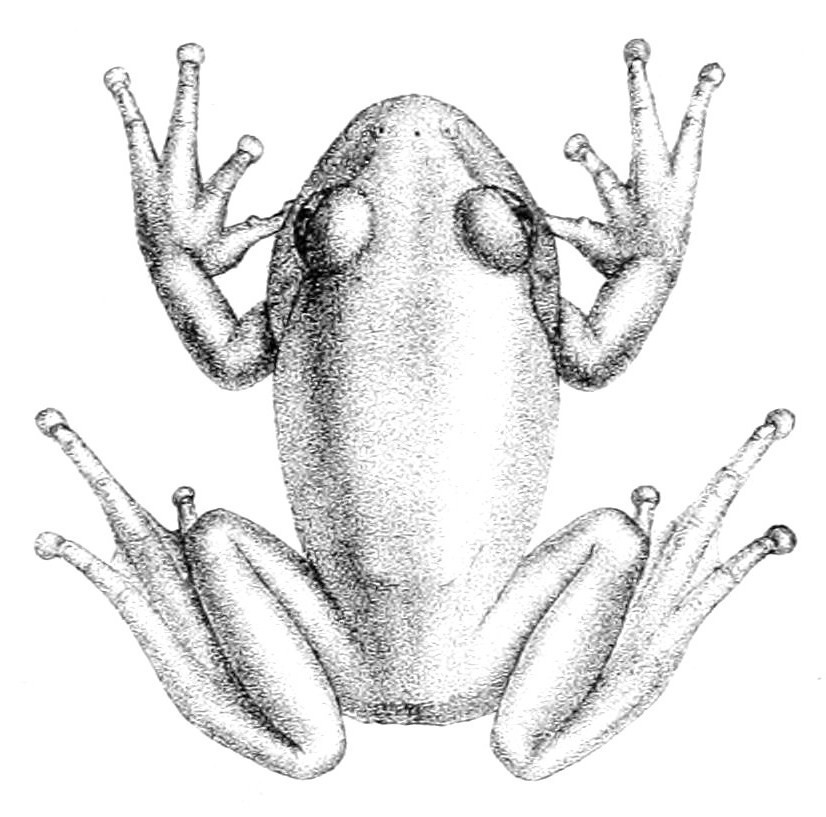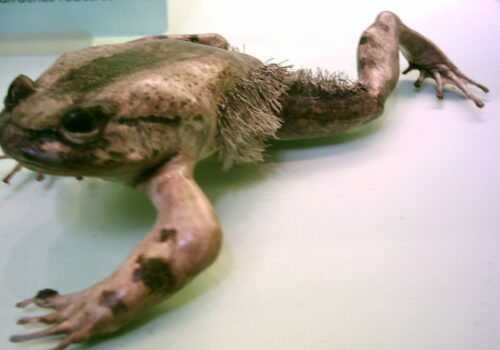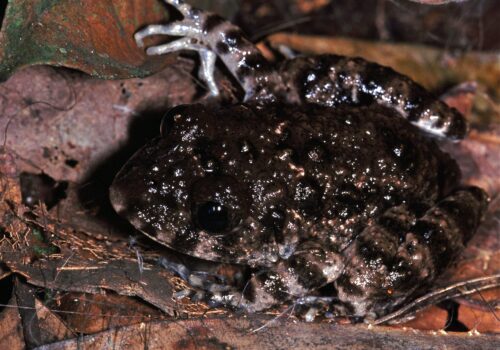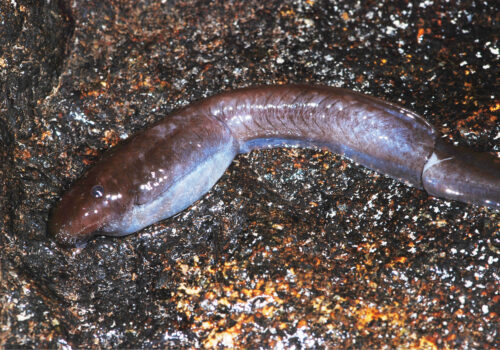- Introduction: An Emerald Jewel Among Forest Canopies
- Taxonomy and Classification
- Natural Habitat: The Forest Jewels of Africa
- Physical Characteristics: Nature's Vivid Craftsmanship
- Behavior and Life Cycle: Moonlit Serenades and Aquatic Nursery Grounds
- Ecological Role: Guardians of Rainforest Health
- Threats and Conservation Status: Preserving the Emerald Heritage
- Cultural and Scientific Significance: Beyond Natural Wonder
- Conclusion: Safeguarding Our African Emeralds
Introduction: An Emerald Jewel Among Forest Canopies#
Hidden beneath lush green foliage and echoing softly within the dense African forests lies an emerald treasure: Leptopelis viridis, more commonly known as the African green tree frog. This captivating amphibian enchants conservationists, scientists, and nature enthusiasts alike with its striking coloration, melodious nocturnal choruses, and compelling natural history.
Belonging to the family Arthroleptidae, Leptopelis viridis thrives in equatorial rainforests, embodying the rich biodiversity found in these vital ecosystems. Whether their delicate calls grace the humid nights of Ivory Coast, or their vivid, jewel-like bodies gleam in Congo’s moonlit leaves, each encounter with this species sparks awe and appreciation for our planet’s astounding wildlife diversity.
Taxonomy and Classification#
The frog species Leptopelis viridis is classified within the family Arthroleptidae, specifically in the genus Leptopelis. The genus includes numerous tree frog species across Sub-Saharan Africa, each adapted uniquely to their particular habitats. First scientifically described in 1869 by zoologist Albert Günther, Leptopelis viridis has long fascinated herpetologists due to its unique behaviors and vibrant appearance.
Closely related species within the genus, such as Leptopelis hyloides and Leptopelis spiritusnoctis, share some common traits yet exhibit distinguished vocalizations and physical morphologies. These nuances highlight the incredible diversity and evolutionary specialization within this captivating amphibian group.
Natural Habitat: The Forest Jewels of Africa#
Native to West and Central Africa, the charming Leptopelis viridis ranges widely through countries such as Ivory Coast, Ghana, Guinea, Togo, Nigeria, Cameroon, Gabon, and into regions of the Congo Basin. Thriving primarily in tropical rainforests, this adaptable frog prefers moist, shaded environments rich with vegetation and abundant supply of insects.
Rather than the damp forest floors occupied by countless other amphibians, Leptopelis viridis inhabits the verdant mid-to-upper strata of its rainforest home—the tall trees, dense vines, and broad leaves of the understory and canopy. This arboreal lifestyle provides safety from ground-dwelling predators and easy access to flying insect prey.
Fascinatingly, the various microhabitats within their environment—stream banks, leafy vegetation clusters, and tree hollows provide breeding grounds and protective shelters. Naturally adapted to their ambient rainforest world, these enchanting amphibians blend into an emerald tapestry—living symbols of pristine, balanced ecosystems.
Physical Characteristics: Nature’s Vivid Craftsmanship#
True to their common name, African green tree frogs showcase vivid green coloration ranging from bright lime-green shades to darker forest-green hues with occasional bluish undertones. These brilliant colors, accompanied by beautiful mottling patterns and spots, provide exceptional camouflage within leafy vegetation, concealing these creatures from a range of predators.
Adults typically reach lengths of approximately 4-6 centimeters, a modest size that permits seamless movement along slender branches. Admirable adaptations include their expanded, sticky toe pads, perfect for climbing slick leaves and branches. Their large, expressive eyes, often golden or bronze-hued, grant excellent nocturnal vision, allowing them to hunt their prey efficiently during the darkest hours.
Interestingly, individual coloration may slightly vary with environmental factors—humidity, temperature fluctuations, and stress levels can subtly influence their appearance, making every frog uniquely captivating.
Behavior and Life Cycle: Moonlit Serenades and Aquatic Nursery Grounds#
Nocturnal Choirs: Calls and Communication#
Leptopelis viridis begins its nightly life as dusk falls over the forest canopy. The stillness of twilight is soon interrupted by melodic calls—a series of drawn-out, resonant notes followed by shorter rhythmic pulses. Male frogs produce these vocalizations to attract females or ward off rivals, creating nature’s own nocturnal symphony amidst the rainforest.
Diet and Hunting Strategies#
As night settles deeper, these agile predators roam tree branches, stealthily hunting moths, beetles, smaller crickets, and various flying insects. Their sticky tongues dart out in a remarkably swift and precise manner, ensuring prey capture without subsequent escape.
Breeding Behaviour and Tadpole Development#
The arrival of heavy rainfall signals breeding season, initiating compelling courtship behaviors. Males perch prominently to broadcast their calls broadly through the forest debris, attracting females from considerable distances.
Egg deposition usually occurs near shallow forest pools, temporary ponds, or slow-moving streams, and often involves the creation of frothy, moisture-rich egg masses positioned strategically among plants or moss. Tadpoles develop rapidly in these transient and nutrient-rich aquatic nurseries, progressing through remarkable transformation from aquatic larvae to agile arboreal juveniles within mere weeks.
This swift, synchronized metamorphosis profoundly underscores their finely adapted life-cycle, enabling survival in unpredictable rainforest hydrological conditions.
Ecological Role: Guardians of Rainforest Health#
Amphibians such as Leptopelis viridis serve invaluable ecological roles within rainforest environments. As a voracious insect consumer, these frogs provide significant natural pest control, regulating insect populations and maintaining forest health.
Strongly tied to water quality, amphibians are sensitive bioindicators and can reflect subtle ecological changes within forest ecosystems. Reductions or sudden disappearances in their populations often warn conservationists of underlying ecological imbalances and emerging threats such as pollution, deforestation, or climate-related changes.
The species’ interactions embedded within complex ecological webs—predatory associations with larger reptiles, birds, and mammals—illustrate the interconnectedness of rainforest biodiversity. Protecting Leptopelis viridis thus contributes in important ways to preserving the broader ecosystem resilience, stability, and integrity.
Threats and Conservation Status: Preserving the Emerald Heritage#
Like countless amphibians worldwide, Leptopelis viridis faces serious environmental pressures. Habitat loss through deforestation, logging, agricultural expansion, and settlement encroachment drastically impact their natural habitats, fragmenting vital breeding grounds and diminishing crucial resources.
Moreover, climate change poses unpredictable effects upon rainfall patterns, crucial for their breeding and tadpole development processes. Amphibians worldwide are also particularly prone to diseases such as chytridiomycosis—a devastating fungal infection responsible for widespread declines and even extinction events.
Fortunately, the current assessment by the International Union for Conservation of Nature (IUCN) classifies Leptopelis viridis as “Least Concern,” owing to their relatively stable populations across their extensive geographic range. However, ongoing resistance relies upon diligent habitat preservation, sustainable forestry practices, improved protection protocols, and careful monitoring to avoid future declines.
Cultural and Scientific Significance: Beyond Natural Wonder#
Throughout their range, communities prize frogs as symbols of fertility, renewal, and ecological vitality. Traditional stories often portray these animals as messengers heralding rains or indications of positive agricultural cycles, lending them cultural significance alongside ecological value.
Scientifically, adaptability and keen sensitivity place Leptopelis viridis as valuable subjects of environmental research. Their physiological responses to shifting hydrological conditions, changing climates, and emerging diseases yield insights benefiting amphibian conservation globally—informing wider conservation protocols benefiting countless other rainforest species.
Conclusion: Safeguarding Our African Emeralds#
The African rainforests have long enchanted humankind with lush wilderness beauty and fascinating biodiversity. Amidst this diversity, frogs stand noble, resilient, and brilliantly unique. Leptopelis viridis, an exquisite arboreal ambassador, reminds us powerfully of our intrinsic connection with nature’s vibrancy and vulnerability.
Conserving these emerald gems relies critically upon our dedicated stewardship, informed biodiversity practices, and resource management foresight. Each individual—be it scientist, conservationist, student, nature enthusiast, or awaiting environmentalist—can contribute meaningfully. Together, by protecting and learning from magnificent species like the African green tree frog, we affirm our commitment not just to their survival, but also to the flourishing diversity and enduring beauty of our planet.















